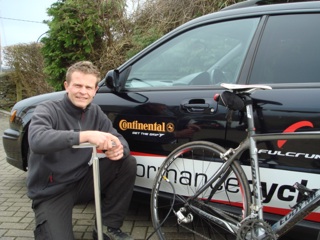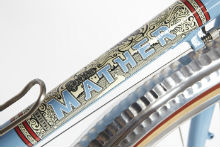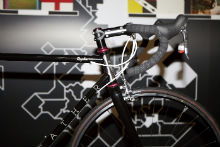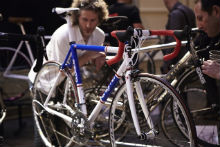
The sportive season is fast approaching and many will be starting their first event of 2012 next month.
Physical preparation is an obvious consideration, but hours spent training could become hours wasted if the bike isn’t prepared to the same standard. A rider’s ability to complete a century ride could be rendered academic after five miles by failure to pack an item as cheap and portable as a spare mech hanger.
We asked Andrew Wilcox, co-owner of Cirencester’s Performance Cycles, and provider of neutral service support at some of Britain’s biggest cyclo-sportives, for mechanical tips to make it to the end of a sportive. Today, Andrew talks us through simple procedures to ensure tyres and wheels keep rolling to the finish line.
Tyre failure has the potential to end your ride instantly. “Check the sidewall,” warns Wilcox. “That’s the tyre’s weakest point.” Cuts could cause the tyre to ‘let go’ at any point, he says, a scenario more likely in the high temperatures of a mid-season event. “A tyre can be inflated to 100psi or more, and on a baking hot summer’s day, that will rise. You’ve suddenly got an extra 20psi you weren’t aware of,” says Wilcox. He advises carrying a spare – “You can get a cheap fold up tyre for £20” – and checking tyres before and after the ride.
Pressure is another key consideration. “We see people who had inflated their tyres to 60 or 70psi and the first pot hole has caught them out,” he says. Rider weight will be a factor, but Andrew advised between 100psi and 110 psi for the vast majority of cyclists, he says.
Checking the tyre while replacing the tube is essential to avoid repeated punctures, says Wilcox. “Sometimes people can be on to their third inner tube. They are moody and miserable. We come along and find a tiny bit of flint. We’ll pop it out with a small screwdriver and it will be fine. Particularly if you’re cycling in the Chilterns, this is one to be aware of,” says Wilcox.
Often less apparent than tyre condition is wear and tear to the rims, whose failure can be catastrophic. “It happened to me once on a mountain bike, and it was quite a frightening experience. 110 or 120psi is a lot to hold in,” says Wilcox.
“Rims do wear out. People do a lot of sportives on the original rims the bike was supplied with. If the rim feels concaved, that’s a sign it’s worn out. Most quality wheels come with some kind of warning device. Fulcrum have three or four tiny drilled holes. Mavic have a black printed line. When that disappears, there could be a huge explosion. If you have done more than 10,000 miles, you could be looking at a set of rims that’s on its way out. My advice would be to make those your training wheels,” he says.





